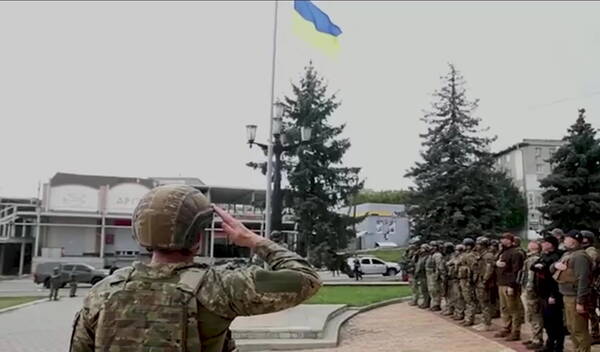War in Ukraine: from invasion to lightning counter-attack
Conflict took a new turn over the past week
12 September, 14:20- FEBRUARY: INVASION - Russian President Vladimir Putin announces a "special military operation" on February 24. He says this is to protect the Russian-speaking, self-declared separatist republics of Lugansk and Donetsk in the east of Ukraine, whose independence he has just recognised. He says he wants to "de-Nazify" Ukraine, a former Soviet republic and demands a guarantee it will never join NATO. A full-scale invasion starts, with air and missile strikes on several cities. Ukrainian President Volodymyr Zelensky pledges to stay in the capital, Kyiv, to lead the resistance. The West imposes unprecedented sanctions on Russia.
The European Union and United States send weapons to Ukraine.
The aid pledged by Washington rises into the billions.
- MARCH: ADVANCES IN SOUTH BUT KYIV HOLDS - Russian troops attack Ukraine's south coast, seizing most of Kherson, a strategic region crucial for agriculture and close to the Russian-annexed Crimean Peninsula. Moscow's forces seek to surround Kyiv and take Ukraine's second city Kharkiv in the northeast. They meet fierce resistance. A month into the fighting, Russia withdraws from the Kyiv area and the north to focus on the eastern industrial Donbas region (Lugansk and Donetsk), partly held by separatists, along with the south.
- APRIL: WAR CRIMES REVEALED - On April 2 and 3, the corpses of dozens of civilians are discovered on the streets and in shallow graves in the Kyiv suburb of Bucha, which Russian forces had occupied, sparking an international outcry. Similar grisly discoveries follow in other northern towns and Kyiv suburbs.
- MAY: MARIUPOL FALLS - Since the start of the war, Russia has besieged and relentlessly bombed the strategic southeastern port city of Mariupol, particularly its vast Azovstal steelworks. Bodies pile up in cellars where residents hide out for weeks. On May 21, Russia announces it is in full control of the city, after the Ukrainian troops that held out for weeks at Azovstal surrender. Sweden and Finland apply to become members of NATO, fearing they could be future targets of Russian aggression.
- JUNE: DONBAS BATTLE RAGES - In June, all eyes are on the Donbas, where Russia harnesses its superior firepower to take the city of Severodonetsk after one of the bloodiest battles of the war. Shortly after they take the neighbouring city of Lysychansk, as Ukraine pleads for more heavy weapons from the West.
- JULY: GRAIN UNBLOCKED, GAS SUPPLIES CUT - On July 22, Kyiv and Moscow sign a deal to resume grain exports from Ukraine, Europe's breadbasket, in a bid to relieve a global food crisis caused by Russia's blockade of the country's ports.
Ten days later, the first official shipment of grain since the invasion leaves Odessa with 26,000 tonnes of maize on board. The breakthrough on grain, brokered by the United Nations and Turkey, is overshadowed by the escalating gas dispute between Russia and Europe. Russian energy giant Gazprom slashes its supply to Europe through the Nord Stream pipeline before turning off the tap altogether, prompting a spike in gas prices and fears of shortages this winter.
- AUGUST: NUCLEAR FEARS - In August, concerns mount over the Russian-occupied Zaporizhzhia nuclear power plant in southern Ukraine. Constant shelling of the area raises the spectre of a nuclear disaster. UN inspectors arrive at Zaporizhzhia -- Europe's largest nuclear power plant -- on September 1 and call for a security zone to be set up around it. As the US and EU step up their supplies of heavy weapons, Kyiv launches a major offensive to retake the city of Kherson in the south.
- SEPTEMBER: LIGHTNING COUNTER-OFFENSIVE - On Sunday, Ukraine claims it has retaken more than 3,000 square kilometres (1,158 square miles) of terrain in a second, lightning counter-offensive around Kharkiv in the northeast which appeared to catch Russia off guard. Kyiv says the area includes the key city of Izyum and accuses retreating Russian forces of targeting the electricity grid, causing massive power cuts in the east. On Monday, the military says it has recaptured 20 more settlements in 24 hours. The reaction in Moscow is muted but a map released by the defence ministry confirms a major withdrawal from the Kharkiv region. (ANSA-AFP).














